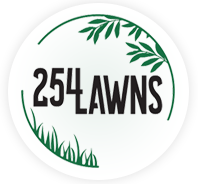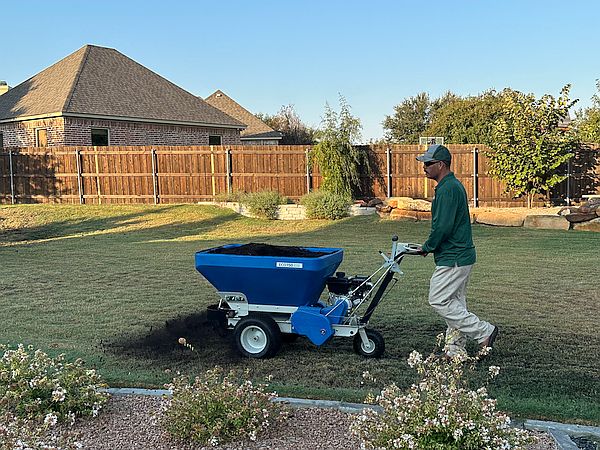What is Top Dressing?
Lawn top dressing is the process of spreading a thin layer of a mixture of materials, such as sand, compost, and soil, over the top of a lawn to improve its health and appearance. This practice helps to level the surface, improve soil drainage, reduce thatch, and add nutrients, leading to a thicker, healthier, and more resilient lawn. This will assist the lawn in becoming more resistant to problems, but it is not a cure all. We recommend regularly inspecting your lawn for issues.

Improves Soil Structure
Reduces Thatch Buildup
Increases Water Retention

Adds Nutrients Naturally
Boosts Microbial Activity

Levels and Smooths the Lawn Surface
🌿 Top Dressing and Soil pH
When you top dress with compost, you’re adding organic matter that can slightly acidify the soil over time, depending on what the compost is made from.
- As this organic matter decomposes, it releases organic acids such as humic and fulvic acids.
- These acids lower soil pH slightly, especially in alkaline or neutral soils, creating a more balanced environment for grass roots and beneficial microbes.
🧫 How This Helps Combat Lawn Fungi
Many lawn fungal diseases (like brown patch, dollar spot, and pythium) thrive in alkaline, compacted, or nutrient-poor soils. Compost top dressing helps in several indirect but powerful ways:
- Slight acidification – Brings soil pH into the ideal range (6.0–6.5 for most turfgrasses). This discourages certain pathogenic fungi that prefer higher pH conditions.
- Enhanced microbial competition – Compost introduces beneficial microbes that outcompete harmful fungi for space and nutrients.
- Improved drainage and oxygen – Healthier soil with better air and water movement reduces the anaerobic conditions that fungal pathogens love.
- Stronger grass roots – Well-fed, deep-rooted turf is naturally more resistant to fungal infections.
⚖️ Balance Is Key
Top dressing doesn’t make the soil highly acidic — it just nudges it toward a healthier, balanced pH where turf thrives and many fungi struggle. If problems persist consider contacting the County Extension Office for a soil test.



